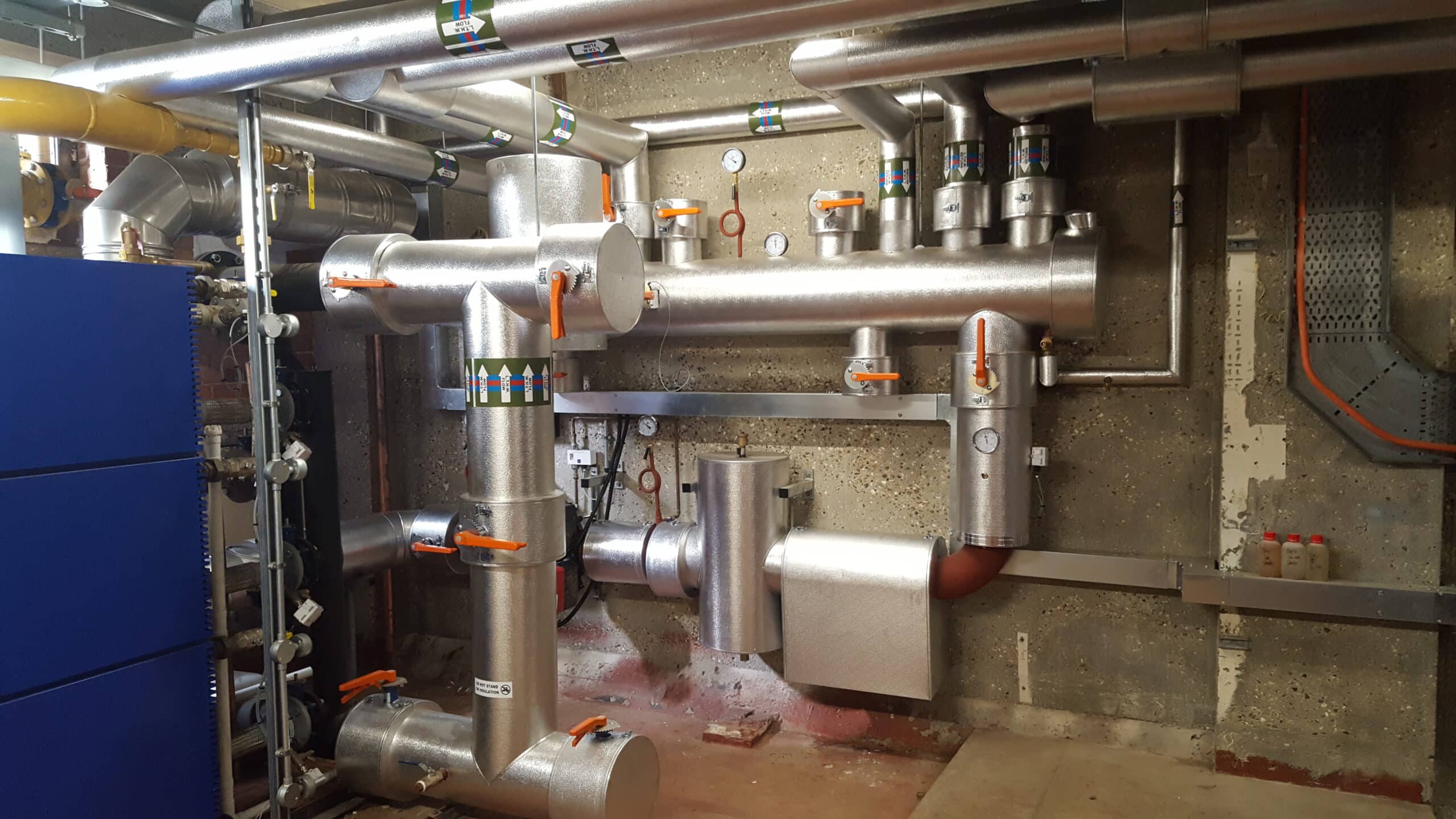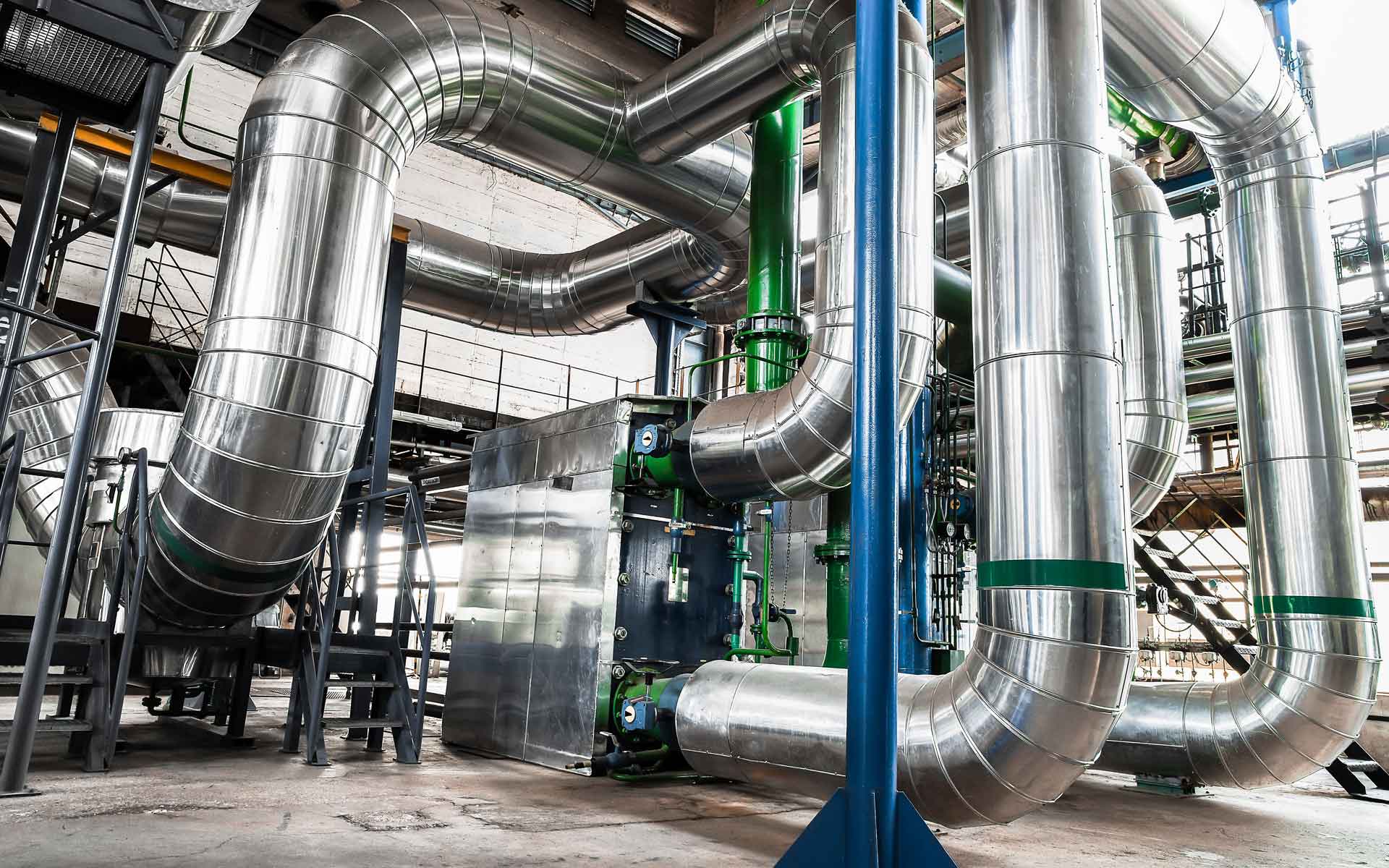

Acoustic Lagging
Acoustic lagging is a high-performance composite product specifically engineered to control noise emitted from pipes, ducts, valves, and other building service infrastructure. It functions as a flexible, multi-layered wrap that is applied directly to the exterior of these noise sources. Its primary purpose is to significantly reduce the amount of sound energy that radiates into surrounding spaces, thereby creating quieter, more comfortable, and more productive environments.
Unlike standard thermal insulation, which is designed primarily to prevent heat loss or gain, acoustic lagging is built for sound attenuation. It achieves this by combining the principles of sound absorption and sound blocking into a single, highly effective system. This makes it an essential component in modern construction, particularly in noise-sensitive buildings like hospitals, hotels, recording studios, corporate offices, and premium residential apartments.
Understanding the Noise Problem: Airborne vs. Structure-Borne Sound
To appreciate how acoustic lagging works, it’s important to first understand the two types of noise it is designed to combat:
Airborne Noise: This is sound that travels through the air. In the context of a pipe, it’s the audible “hiss” of water flow, the “gurgle” of drainage, or the “whoosh” of air moving through a duct. The pipe’s wall vibrates and transmits this energy into the air, which we then perceive as sound.
Structure-Borne Noise: This is sound energy that travels through solid materials as vibrations. When a pipe or duct vibrates, that energy doesn’t just create airborne noise; it also travels along the pipe itself and into the building’s structure through hangers, clamps, and supports. This can cause walls and ceilings far from the original source to vibrate and radiate noise, a phenomenon known as flanking noise.
An effective solution like acoustic lagging for pipes must tackle both of these issues simultaneously.
The Anatomy of High-Performance Acoustic Lagging
Acoustic lagging is not a single material but a composite system. Its remarkable effectiveness comes from the synergy between its distinct layers, each performing a specific acoustic function.
Layer 1: The Decoupling Foam (The Sound Absorber)
The innermost layer, which makes direct contact with the pipe or duct, is a flexible, open-cell acoustic foam or a similar absorptive material like fiberglass. Its role is to act as a decoupler. It creates a soft, spring-like separation between the noisy pipe and the heavy outer barrier. This layer absorbs vibrational energy, converting it into minuscule amounts of heat and preventing the structure-borne vibrations from reaching the outer layers. It also absorbs a portion of the airborne sound trapped within the system.
Layer 2: The Mass Loaded Vinyl Barrier (The Sound Blocker)
This is the core of the system and the primary defense against airborne noise. Wrapped around the decoupling foam is a heavy, dense, but flexible layer of Mass Loaded Vinyl (MLV). This layer works on a fundamental principle of acoustics known as “Mass Law,” which states that the heavier and denser a barrier is, the more effective it is at stopping sound from passing through it. High-quality acoustic lagging insulation typically features a mass barrier with a surface density of at least 5 kilograms per square meter (5 kg/m2). This sheer mass presents a formidable obstacle to sound waves, reflecting and blocking the vast majority of airborne noise energy.
Layer 3: The Reinforced Foil Facing (The Protective Jacket)
The exterior of the lagging is a durable, scrim-reinforced aluminum foil. This layer is crucial for performance and longevity. It provides mechanical strength, protecting the inner layers from tears, punctures, and damage during installation and maintenance. It also acts as a fire-resistant shield, often contributing to a higher fire safety rating for the overall system. Furthermore, it serves as an effective vapor barrier, preventing moisture from compromising the insulation—a vital feature in all climates. Its clean, smooth surface is designed for easy and effective sealing with specialized foil tape.
Key Performance Metrics: How Efficacy is Measured
The performance of pipe acoustic lagging is not subjective; it is measured using standardized acoustic metrics.
Insertion Loss (dB): This is perhaps the most important metric. It measures the direct reduction in sound pressure level, in decibels (dB), achieved by applying the lagging to a pipe or duct. For example, an insertion loss of 15 dB means the lagging has made the pipe 15 decibels quieter. Since the decibel scale is logarithmic, this represents a very significant reduction in perceived loudness.
Sound Transmission Class (STC): This is a single-number rating that indicates how well a barrier attenuates airborne sound. While typically used for walls and floors, an STC rating can also be given to a composite material like acoustic lagging to represent its overall effectiveness at blocking a range of sound frequencies. A higher STC rating means better performance.
Common Applications
The need for effective noise control in service infrastructure is widespread, making acoustic lagging a versatile solution for numerous applications.
Drainage, Soil, and Waste Pipes: In multi-story buildings, the sound of flushing toilets and draining sinks is a primary cause of noise complaints. Applying acoustic lagging for drainage pipes is a standard practice in quality construction to ensure acoustic privacy between floors and apartments.
HVAC and Duct Lagging: The constant hum and airflow noise from heating, ventilation, and air conditioning systems can severely impact the acoustic comfort of a space. Lagging ductwork, especially in sensitive areas like conference rooms, libraries, and private offices, is essential for maintaining a quiet atmosphere.
Commercial Water and Chilled Lines: High-pressure water pipes and chilled water lines for air conditioning can generate significant flow noise. Applying acoustic lagging for pipes in these systems prevents this noise from disturbing building occupants.
Industrial Piping and Equipment: In industrial settings, process piping can be extremely noisy. Lagging is used to protect workers from hazardous noise levels and to comply with occupational health and safety regulations.
Pump and Fan Housings: Encasing noisy equipment like water pumps and ventilation fan housings with acoustic lagging can dramatically reduce the sound they radiate into mechanical rooms and adjacent spaces.
Acoustic Lagging vs. Standard Thermal Insulation
It is a common misconception that any pipe insulation can control noise. This is incorrect.
Primary Function: Standard thermal insulation is designed to slow the transfer of heat. It is typically lightweight and porous (like fiberglass wool). Acoustic lagging is designed to block sound and absorb vibration; it is dense and heavy.
Mechanism: Thermal insulation works by trapping air. This makes it very poor at blocking sound, as it lacks the necessary mass. Pipe lagging acoustic performance relies on mass to block sound and a decoupling layer to absorb vibration.
Conclusion: While acoustic lagging provides excellent thermal benefits as a secondary function, standard thermal insulation provides almost no acoustic blocking performance. For noise control, a specialized acoustic product is always required.
The Critical Importance of Correct Installation
The performance of an acoustic lagging system is entirely dependent on the quality of its installation. Even the best materials will fail if installed improperly.
No Gaps: Sound is like water; it will find any crack or opening to escape. A tiny, unsealed gap can compromise the entire installation, creating a “flanking path” for noise. The lagging must be meticulously cut and fitted to ensure 100% coverage.
Overlapping and Sealing: All joints and seams must be overlapped and sealed with a high-quality, reinforced aluminum foil tape. This creates a continuous, airtight, and acoustically integral barrier.
Secure Fit: The lagging should be held snugly against the pipe or duct using matching tape or mechanical fasteners to ensure the decoupling layer is properly engaged.
AKINCO: Engineered Acoustic Control Systems
At AKINCO, we recognize that achieving acoustic excellence is a science. Our acoustic lagging and wrap systems are engineered to meet the highest performance standards required by today’s advanced building codes and client expectations. We provide more than just a product; we offer a comprehensive solution designed for maximum noise reduction, durability, and ease of installation. By integrating high-density mass barriers with high-performance decouplers, our systems are trusted by architects, engineers, and contractors to deliver genuinely quiet and comfortable spaces. For any project demanding uncompromising control over infrastructure noise, AKINCO provides the technology and expertise to achieve it.
Advantage
- Excellent Noise Control and Sound Proofing – STC Rating up to 34
- Class A Flammability Rating per ASTM E-84
- Passes UL-94 and FMVSS 302 standards
- Available in various surface densities – 1 lb / ft2 and 2lb / ft2
- Maximizes noise control by providing high sound absorption (reverberation control) and superior transmission loss
- Excellent flame resistance
- Long useful life
- Easy to cut
- Easy to install
- Highly effective duct lagging
Applications
Hydraulic and waste pipe lagging in all locations
- Air-conditioning duct lagging and shrouds
- Compressor wraps
Spa motor wraps
Technical Data
- Vinyl barrier weight (1mm/ 2mm) 5kg/m2
- Thickness 25mm
- Maximum temperature 80 degC
- Fire performance (AS1530.3) 0,0,0,0-1
- Weighted Sound reduction index RW = 27 db
Performance
- Sound Transmission Losses/ Sound Reduction Index
- Freq (Hz) 125 250 500 1000 2000 4000 STC Rw
- Decibles(dB) 16 19 29 38 48 52 32 29





